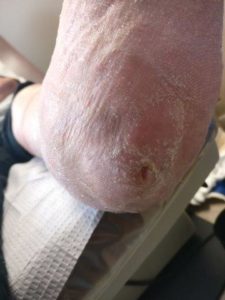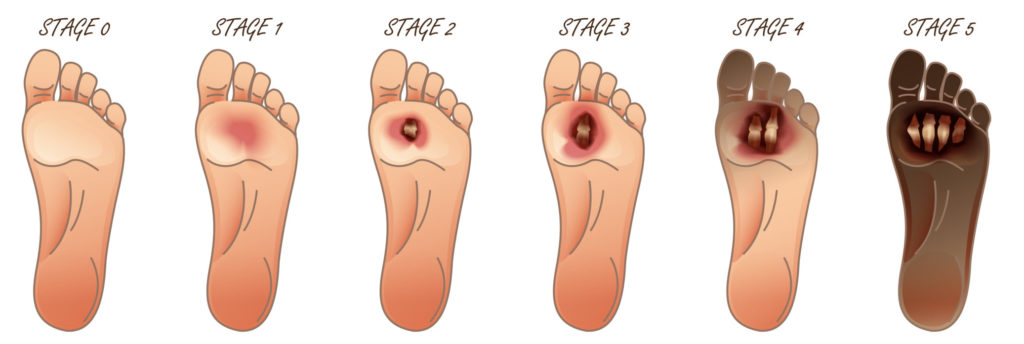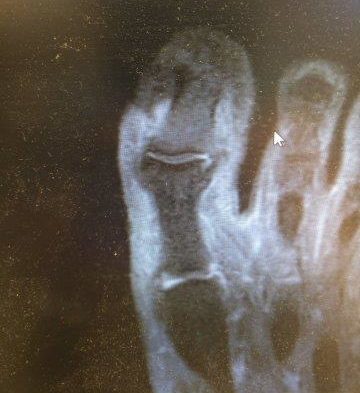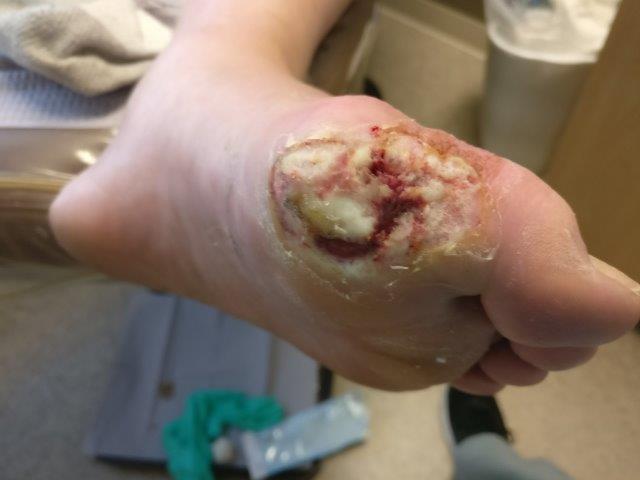Expert Foot & Ankle Treatment from Michigan’s #1 Podiatrist - Balance Foot & Ankle Specialist
Don’t Ignore the Warning Signs
What You Need to Know About Staph Infection in Your Toe
A staph infection in the toe is more than just a skin issue—it can become a serious condition if left untreated. Whether it starts from a minor cut, ingrown toenail, or cracked skin, this bacterial infection can quickly spread and lead to pain, swelling, pus, and even fever. Understanding the symptoms and knowing when to seek treatment is essential, especially for people with diabetes or immune issues. Let’s dive into what causes a toe staph infection and how to stop it fast.
Understanding Toe Staph Infections: Causes, Symptoms & Risk Factors
Staph infections are caused by the bacteria Staphylococcus aureus, which can enter the skin through cuts, abrasions, or ingrown toenails. Symptoms typically include redness, warmth, pain, pus drainage, and swelling in the affected toe. In more severe cases, it can cause fever or spread to the bloodstream. People with diabetes, poor circulation, or weakened immune systems are especially at risk. Early diagnosis and proper wound care are key to preventing long-term complications.
Staph Infection on the Toe or Foot - Early Signs & BEST Treatment-
How do you treat a staph infection on your toe or foot? We go over early-stage signs of toe staph infection & foot staph infection!
Toenail Pain (Toenail Fungus, Ingrown Toenails, Discolored Toenails)
Worried About a Toe Infection? Book an Appointment Today
If you’re experiencing signs of a staph infection in your toe, don’t wait it out—early treatment is crucial. At Balance Foot & Ankle, Dr. Tom Biernacki provides trusted, research-backed care in Howell and Bloomfield, Michigan. Our approach is simple, affordable, and effective. Call now or schedule your visit online to get personalized foot care that works.
Call us or Schedule a consultation today and take your first step toward pain-free living.
Diabetic Foot Ulcer and Staph Infection Treatment Video:
This video is not specifically about staph infections in the toe, foot, or heel. But it is beneficial for treating diabetic foot wounds that will not get better. These are probably the number one source of staph infections in the foot that we do see.
Diabetic Staph Infection of Ulcer Video Overview:
Do you have Diabetic foot pain? This may be the start of a Diabetic Foot Ulcer. We go over the Diabetic Foot Ulcer Early Signs, Causes & BEST Home Treatments
How to treat a diabetic foot ulcer:
0:00 What is a diabetic foot ulcer?
0:53 Diabetic foot ulcer causes
1:08 Diabetic foot ulcer beginnings
2:55 Diabetic foot ulcer infection treatment
3:17 Diabetic foot ulcer stages
3:47 Diabetic foot ulcer podiatrist and diabetic foot ulcer doctors
4:27 Diabetic foot ulcer early signs
4:44 Infected diabetic foot ulcer treatment
5:10 Diabetic foot ulcer treatment at home
5:45 Diabetic foot ulcer total contact cast
6:30 Diabetic foot ulcer shoes
6:45 Diabetic foot ulcer orthotics
7:20 Diabetic foot ulcer exercises and Diabetic foot ulcer stretches
9:08 Early stage diabetic foot ulcer
9:53 Diabetic foot ulcer Home Treatment
10:10 Diabetic foot ulcer Peripheral Neuropathy
Staph Infection on Toe Pictures & Staph Infection On The Foot Pictures:
What Is a Toe Staph Infection or Foot Staph Infection?
- Staph infection is a result of the bacteria known as Staphylococcus aureus.
- This is a bacteria or germ that is commonly found on the surface of everyday healthy people.
- It is most commonly found on the skin or in the nose.
Mild Staph Infections of The Foot or Toe Symptoms:
- Studies show that for the average person, Staphylococcus aureus bacteria does not cause any significant problems.
- The problem is under the right circumstances. This bacteria can enter into a break in the skin or a place that it is not supposed to be and cause an infection.
- What makes this more complicated is that Staphylococcus aureus can sometimes be antibiotic-resistant.
- This can lead to a severe bacterial infection that can cause hospitalization, significant medical bills, or even amputation of a toe or foot in extreme cases.
- Staph infections of the toe or foot are considered medical emergencies.

Why Are Staph Infections of the Toe or Foot Dangerous?
- If you have ever heard of MRSA, this means methicillin-resistant Staphylococcus aureus.
- These days methicillin is not a commonly used antibiotic, but this means that some antibiotics may not be able to treat your Staphylococcus aureus infection.
- The average person should not worry about Staphylococcus aureus, AKA a staph infection, but with immunocompromised people under the right circumstances, normal antibiotics may not stop the infection.

Toe Staph & Foot Staph Infection Causes:
Causes of toe staph and foot staph infections include:
- Having an open cut or wound that is not protected or kept clean.
- Suffering a puncture of the skin with your toe or your foot.
- An untreated condition like an athlete’s foot or an allergic reaction to some dirt or debris.
- Wounds that do not heal within a few days.
- Poor hygiene combined with a slow-healing wound.
- Walking barefoot in locker rooms or pools barefoot.
- Poor hygiene for your shoes or feet.
- Sweat or moisture getting into a cut or wound.
- Ingrown toenails that date into the skin and cause pus or infection.
- Eczema or dermatitis as a result of skin irritation.
- Diabetes with an open diabetic wound.
- Chronic diabetic ulcers.
- Poor blood flow or peripheral vascular disease.
- A long history of smoking with an open wound.
- Autoimmune diseases that have a difficult time healing.
Early-stage Staph Infection on Foot:
- It is critical to identify an early-stage staph infection on the foot or an early-stage staph infection on the toe.
- These initially started as a mild staph infection on the foot, the toe, or the heel.
Signs of a Staph Infection on Foot Include:
These are the early signs and symptoms of a staph infection on your toe, foot, or heel:
- A cut or central area of injury.
- A small puncture site.
- A small bruised or swollen area.
- Redness or purple formation around the area.
- Severe pain is beginning to develop around the area.
- A Staph infection on the foot from a blister.
- A growing oozing blister on the foot or the toe.
- The sensation that a fever or flu may be beginning.
- Whole-body symptoms such as fever, aching, or soreness.
- And an inability to sleep from the pain.
- And the inability to put weight or shoe on your foot.

How can you prevent a staph infection on your toes or feet?
- The best way to stop a staph infection on your toe or a staph infection on your foot is to prevent it from happening in the first place.
- If you ever develop a cut or wound on your big toe, her small toes, or your foot, make sure it is clean and covered with a topical antibiotic and a Band-Aid or bandage.
- If you live in Michigan is a great idea to come to see a podiatrist trained in wound care and infections with the board certification such as us.
- We also offer telehealth and podiatrist home care visits in southeast Michigan.

Podiatrist Wound & Infection Care:
- The real benefit of having a podiatrist is that you could call us any time during an emergency if you notice a wound getting red or irritated. We can get you in immediately or start you on an antibiotic.
- The biggest mistake we see with staph aureus infections on the toes or the feet is that people wait a day or 2 too long.
- This, unfortunately, can lead to significant infections that require hospitalization, IV antibiotics, and potentially surgery to clean out an abscess or an infection.
What is a Staph Infection Abscess?
- An abscess can develop in your toe or your foot if the infection gets severe enough.
- This means that the Staphylococcus aureus bacteria is developing faster than your body can handle it, and this becomes a true emergency that may require hospitalization and surgery.
- Podiatrists specialize in foot and ankle wound care as well as infection care.
Staph Infection on Toe or Foot Treatment:
The best treatment for a staph infection on the toe, foot, or heel is not taking any chances. Just contact a board-certified podiatrist near you for immediate care for your staph infection.
How Does a Podiatrist Treat a Staph Infection on Your Foot?
- Our goal is to contact the patient as soon as possible once symptoms are noted.
- If you notice early signs of a staph aureus infection in your toe or foot, it is a great idea to call your podiatrist in immediately for antibiotics or evaluation.
- If the infection is severe enough, we can determine whether hospitalization is needed through telehealth or an office visit.

When is Surgery Needed for a Staph Infection?
- A Staphylococcus aureus incision and drainage surgery (infection clearing surgery) may be needed to drain the pocket of fluid in the wound.
- This may even be necessary to perform surgical debridement of the tissue Staphylococcus aureus is living on if it has overwhelmed your body.
- Podiatrists are well trained, usually performing 100s if not 1,000s of these procedures in both the office and hospital setting.
Who is at Most Risk For a Staph Aureus Infection on Your Foot?
The people at most risk for a staph infection in the toe or staph infection in the foot are:
- Patients with diabetes.
- Patients with peripheral neuropathy.
- Patients with poor blood flow.
- Chronic smokers.
- Patients on dialysis.
- Patients with an immunocompromised disease.
- Patients with an autoimmune disorder.
- Patients that have shown a history of poor healing.
- Patients that have shown difficulty in healing a chronic ulcer or foot wound.
Staph Infection On Toe Pictures & Staph Infection On The Foot Pictures
Podiatrist Treatment For Staph Infections of the Toe, Foot or Heel:
- Toenail Fungus Treatment (Oral or Laser ).
- Toenail Trimming.
- Orthotics Fitting.
- Ingrown Toenails.
- Infected Ingrown Toenails.
- Podiatrist pedicure or medical pedicure.
- Trimming of Corns, Trimming of Calluses, and Treatment of Pressure Blisters.
- Diabetic Foot Care & Diabetic Foot Wounds.
- Athletes Foot, Dry Skin, Eczema.
- Foot & Ankle Ulcer Care.
- Infection and Abscess Care.
- Staph Infections in the Toe or Foot Treatment.
- Treatment of Plantar Warts for Your Toes and Feet.
- Foot & Ankle Injections (Steroid or Natural Solutions.)
- Management of Foot & Ankle Fractures (Walking Boots for broken toes or broken feet).
- Heel Pain (Heel Spur or Plantar Fasciitis).
- Custom Orthotics for children and adults (In the office).
- Over the Counter Orthotics for children and adults.
- Podiatrist medical pedicure.
- Extra-Depth Shoes for Patients with Diabetes.
- Diabetic Shoes.
- Gout Treatment.
- Prescription (Refills).
- Telehealth appointments.
- Shockwave therapy (AKA ESWT or EPAT therapy)
- Cold laser therapy (In the office).
- MLS laser therapy (Multi-Wave Locked System laser therapy).
- Laser for peripheral neuropathy (In-Office).
- Senior Toenail Cutting & Toenail Trimming Services.
Can a Staph Infection Start on the Foot From a Blister?
- Yes, we frequently see blisters associated with staph infections.
- If there is any oozing or draining combined with redness or pain, this may signal that an infection occurs with the blister.
- A blister can lead to a staphylococcus aureus infection in the foot or toe.
How to Get Rid of a Staph Infection on the Toe?
- The best way to get rid of a staph infection on the toe is to prevent one from developing in the first place.
- If you have a cut or a wound, it is necessary to heal it quickly.
- If you have health conditions that would prevent you from healing, such as diabetes or poor health due to smoking or alcohol, get these corrected as soon as you can.
- If you are actually developing an infection right now, call your podiatrist or go to an emergency room.
- This can be a serious risk to her health and can become both foot and life-threatening.
How Do You Treat a Staph Infection on Your Toe?
- As mentioned above, the best way to treat staph infection on her toes is to get as healthy as possible, see a podiatrist as early as you can and get as healthy as possible.
- If you need a podiatrist, you can give us a call in Michigan, and we can try to help. Otherwise, see the podiatrist closest to you or your primary care doctor soon as possible.
- It is not a good idea to try and treat staph infection on your toe, foot, or heel by yourself at home.
At Balance Foot & Ankle, Dr. Tom Biernacki delivers expert treatment for staph infections in the toe, serving patients in both Howell and Bloomfield, Michigan. Our care approach is based on proven results—drawing from the successful treatment of over 10,000 patients and backed by trusted medical research. We focus on keeping your care simple, effective, and affordable, avoiding unnecessary tests or procedures while ensuring fast and safe recovery from toe infections.

What a Podiatrist Can Do For YOU!
Book Your Appointment Today—Relief Starts with One Call
Fast, Friendly, and Professional Treatment You Can Trust
Frequently Asked Questions About Staph Infection in the Toe
Yes. A staph infection from an ingrown toenail is common if the skin breaks and becomes infected. Seek treatment if redness, pus, or swelling occurs.
Yes. If you notice pain, swelling, or discharge, especially with fever, urgent care for a staph infection is strongly recommended.
A staph infection from a dog should be cleaned immediately. While some home remedies may help with minor symptoms, medical care is best.
Absolutely. Staph infection with diabetes can become severe quickly. Regular foot checks and immediate treatment are critical.
A bleach bath for staph infection may help reduce bacteria on the skin, but it should only be done under medical supervision.
A bleach bath for staph infection may help reduce bacteria on the skin, but it should only be done under medical supervision.
Redness, swelling, warmth, and pus around the toe are typical early signs. Pain that worsens or doesn’t improve is also a warning.
With proper treatment, mild cases can improve in 5–10 days. Severe or diabetic cases may take longer.
Yes. Staph can spread through contact, especially if pus or drainage is present. Keep the area covered and practice hygiene.
Yes—keep your feet clean, dry, and inspect for cuts or ingrown nails. Proper foot hygiene is the first line of defense.

